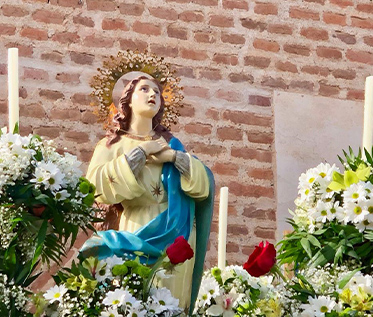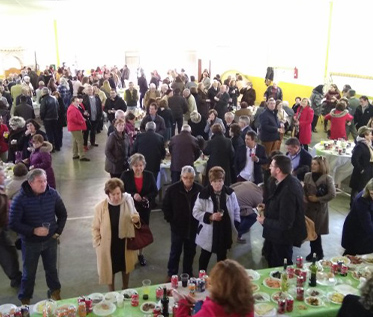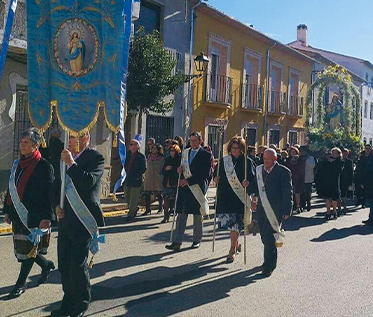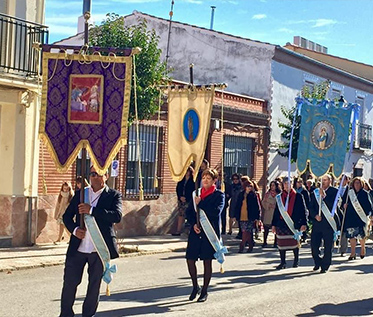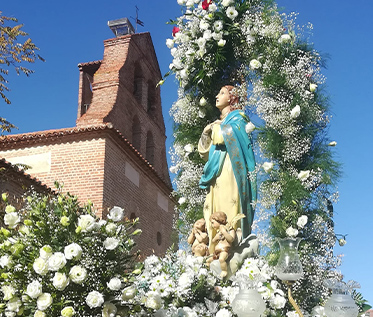Attractions
Festivals and traditions
Feast of San Antón (17 January)
The image of San Antonio Abad is carried in procession accompanied by the older brothers who are in charge of inviting the population. A large bonfire in the square is used for the locals to share typical food, including bread rolls with matalaúva.
Typical songs and dances are sung and danced around the fire, the traditional “corros”. Animals are blessed and doughnuts are made, which are blessed and distributed in the houses of the village to protect people and animals.
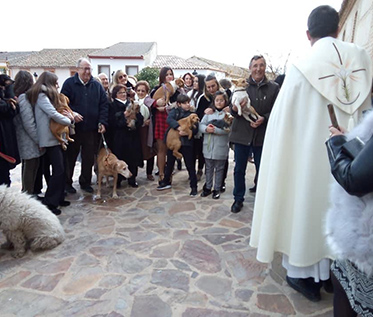
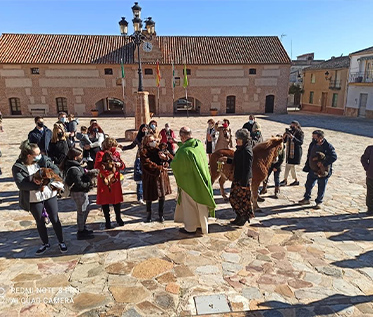
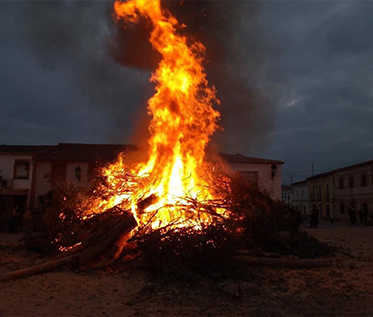
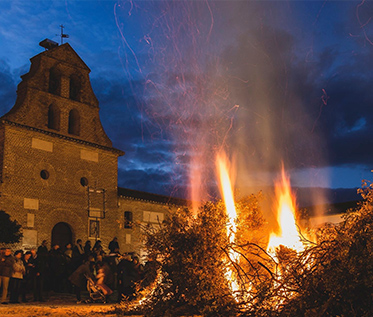

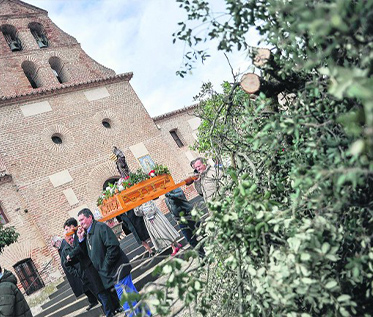
Candlemas (2 February)
In this festival, bonfires are held at the doors or gates of the houses around the time of the Ánimas, where family and friends gather to share food, songs and dances.
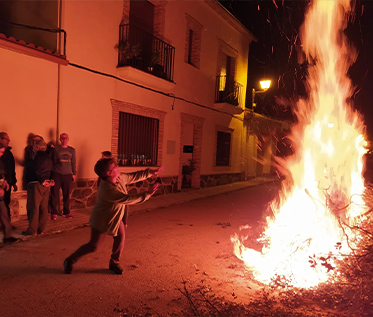
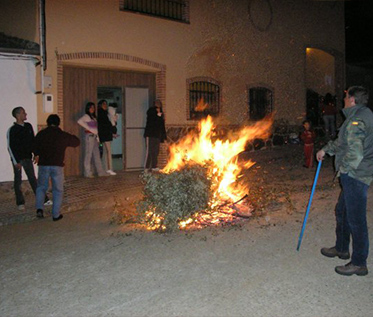
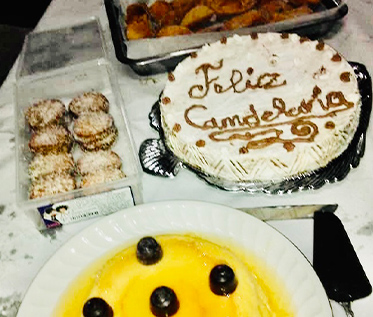
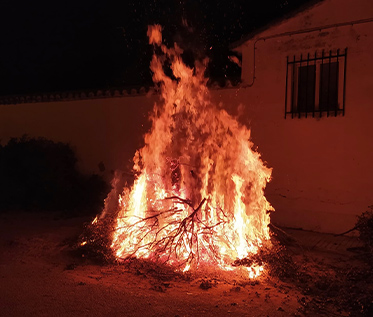
Carnival
One of the most traditional fiestas in Aldeaquemada, and influenced in its origin by the Central European settlers who arrived during the foundation of the colony in 1768.
Carnival has been celebrated without interruption, even during the Franco dictatorship, and its most representative activity is the masked or carnival balls.
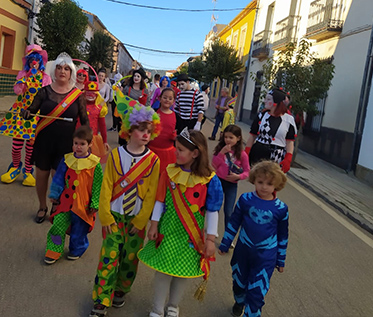
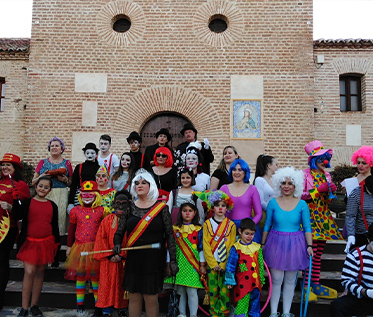
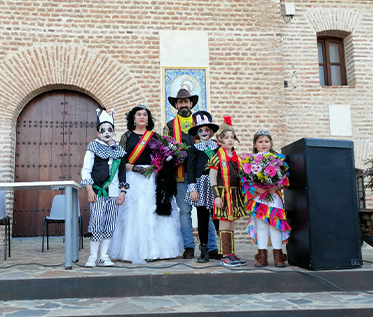
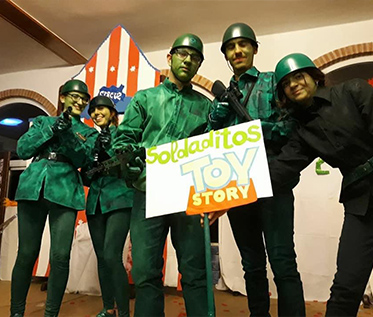
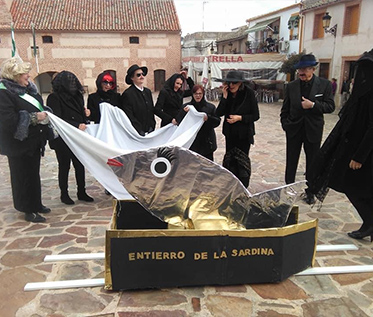

St Mark's Day (25 April)
This festival is celebrated with a big picnic with friends and family, which is popularly called the “hato”.
The “cuadrillas” prepare typical food, with lamb meat and a sweet, the famous “hornazo”.
Children play on the rocking chairs, swings that are made from the branches of trees.
A recent element is the pilgrimage, which takes place with an image of San Marcos at the Puente de la Venta.
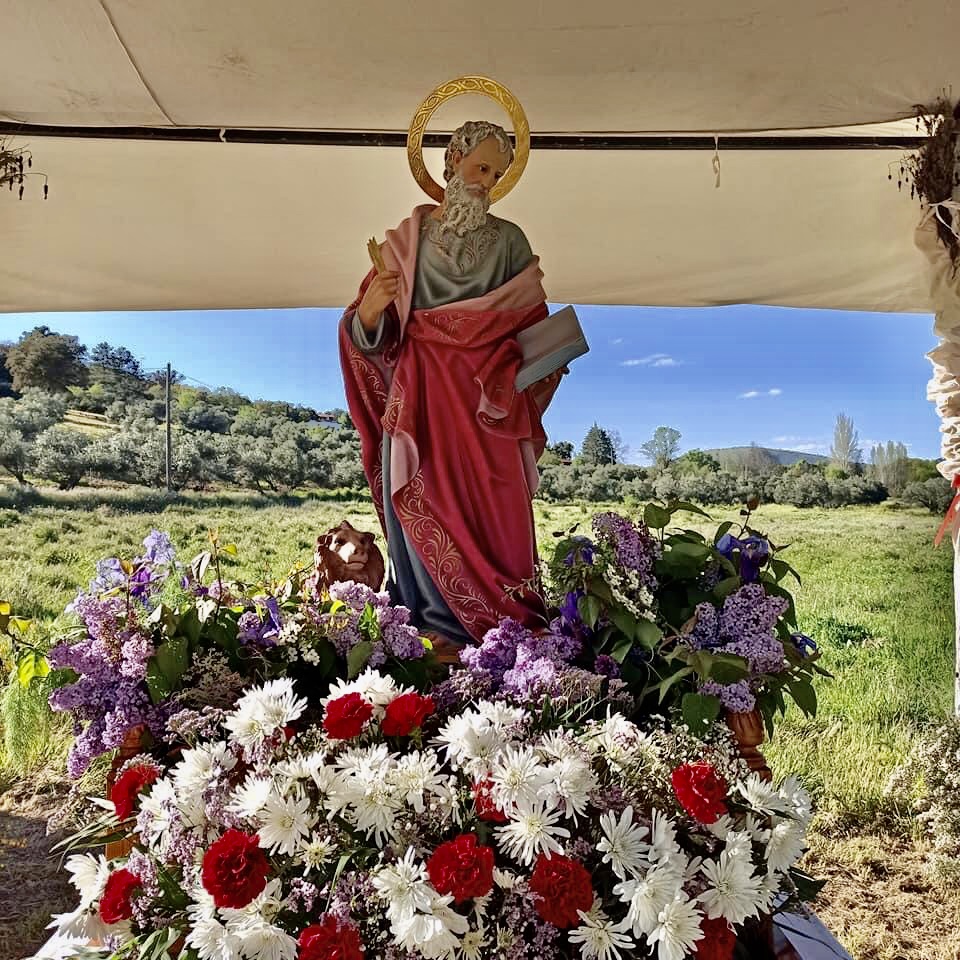


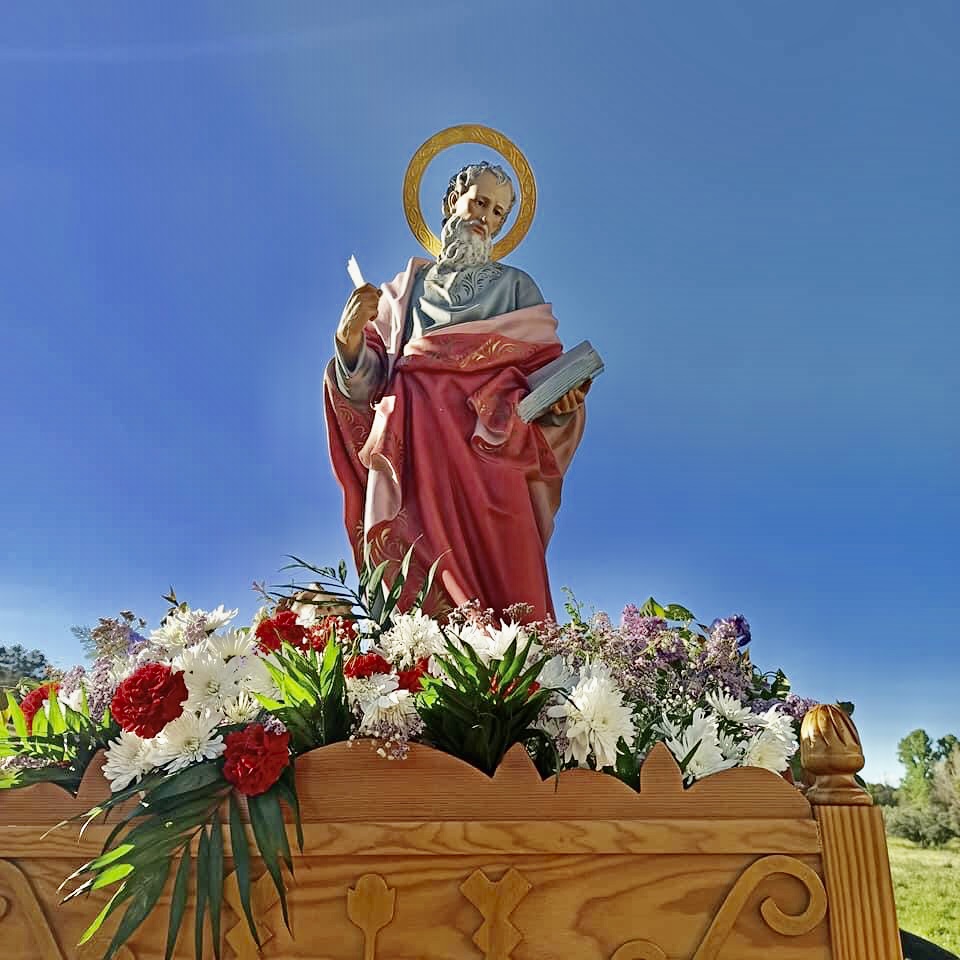
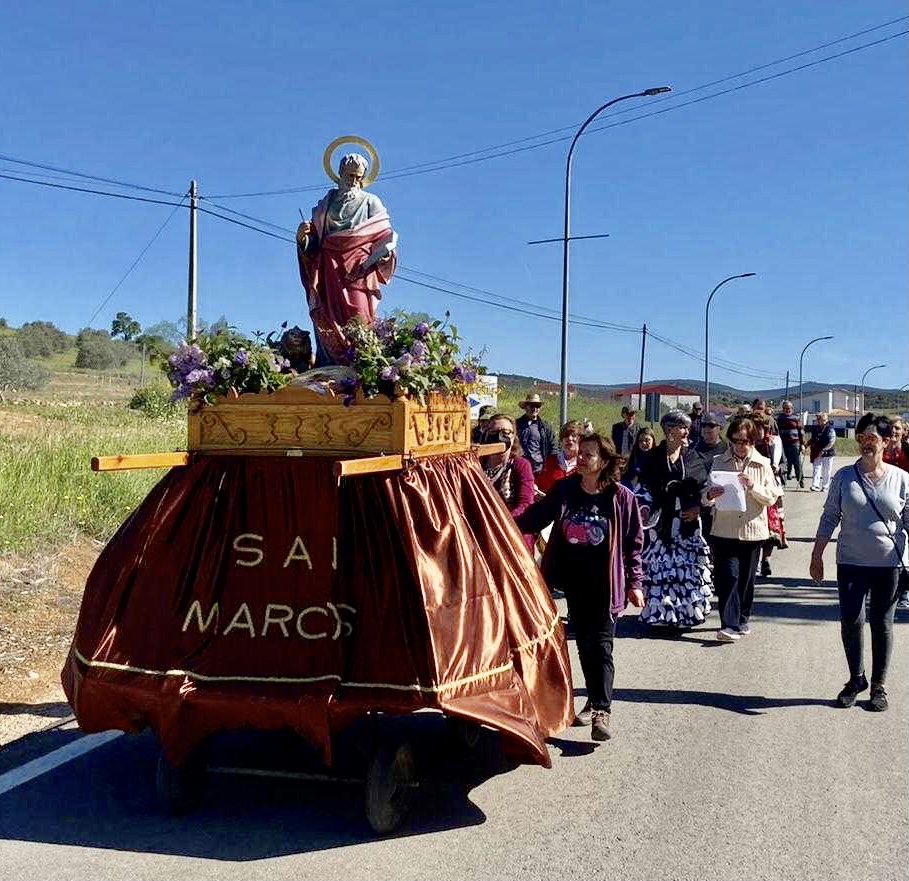
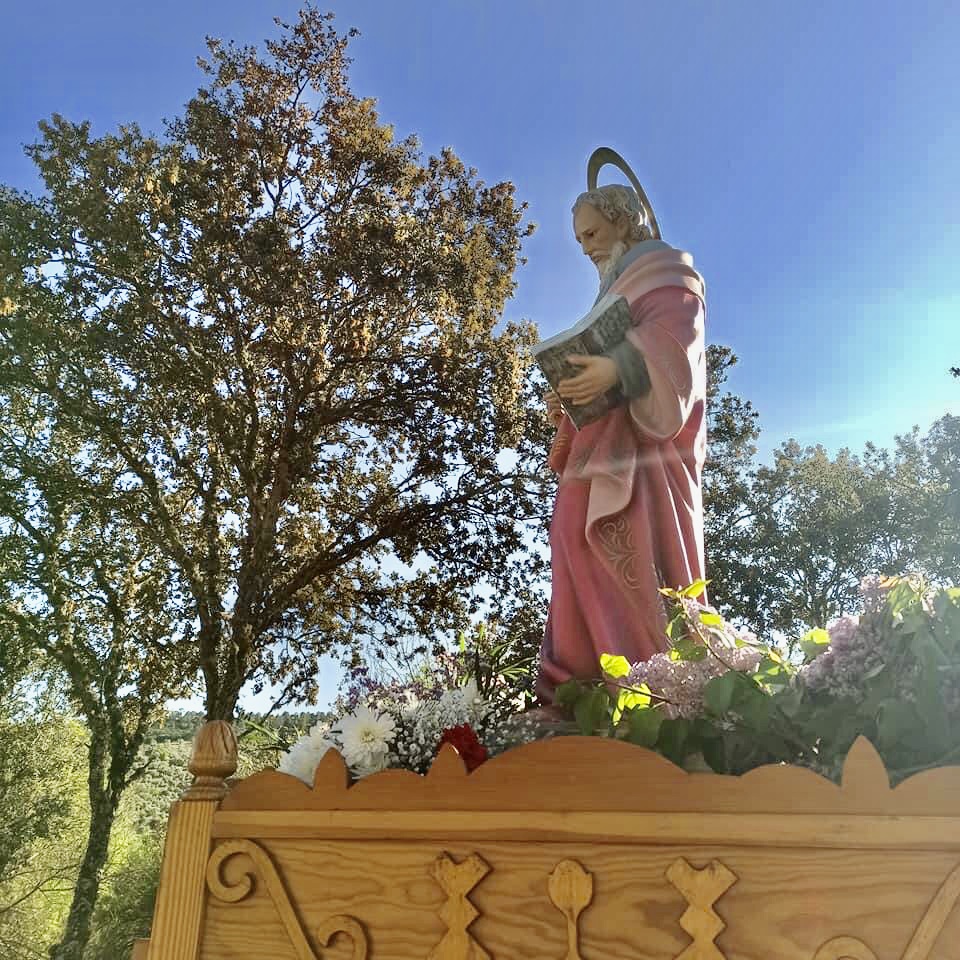
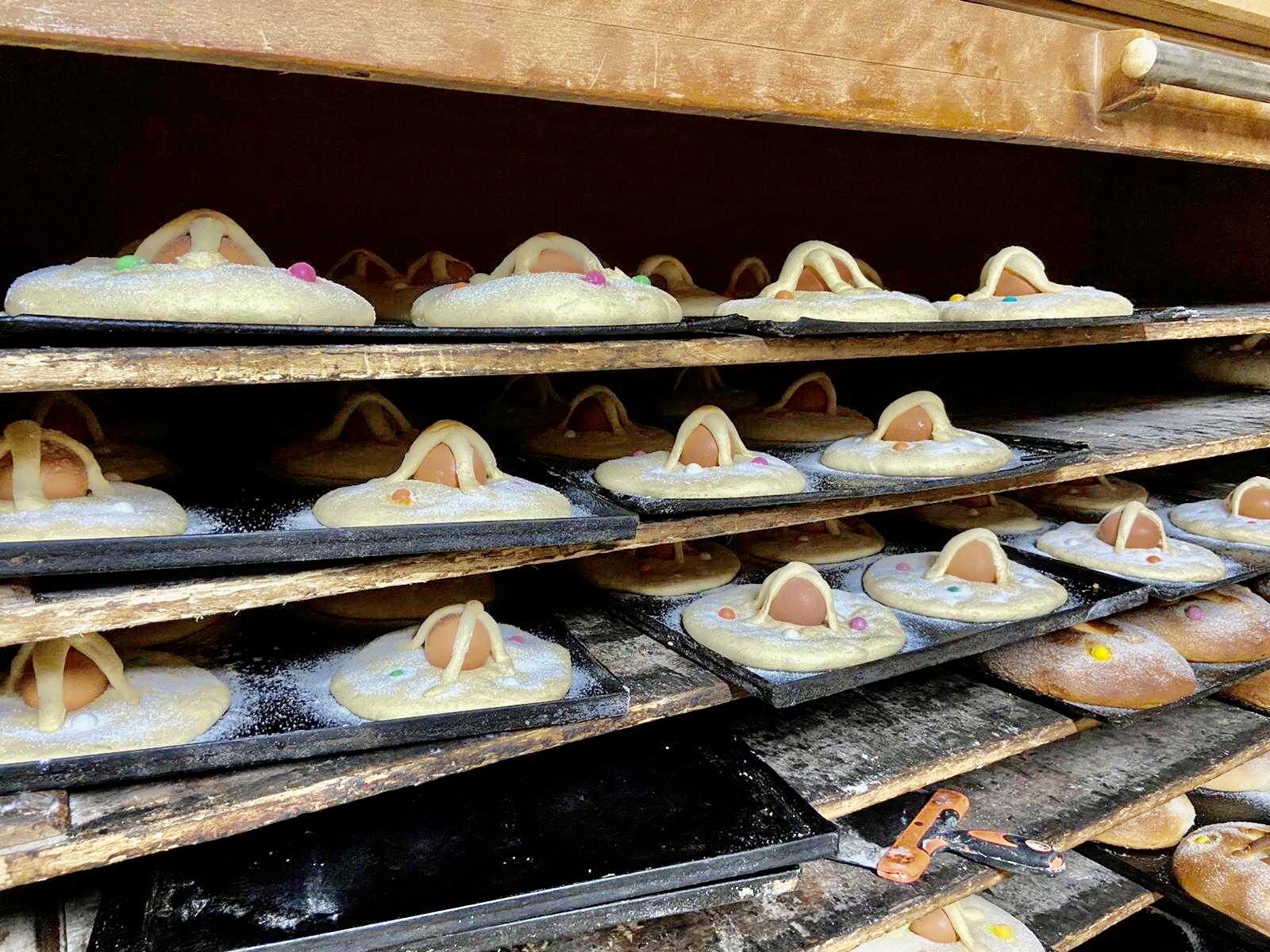
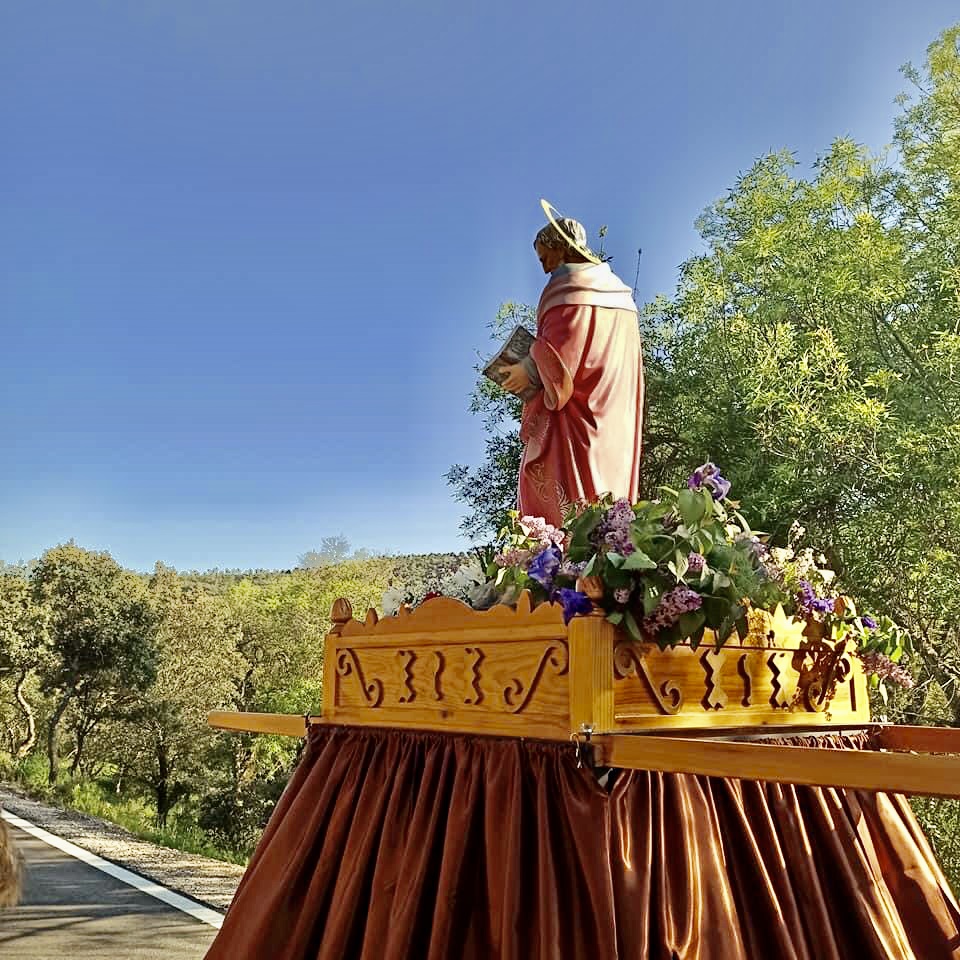
Easter
The Church of the Immaculate Conception becomes the place from which the various images of the Passion of the Holy Week depart.
Along with the main Palm Sunday services, with the blessing of palms and on Easter Sunday, the images of Jesus Crucified, Our Lord of Sorrows and Jesus of Nazareth are carried in procession. professional parades are held for the various liturgical events.
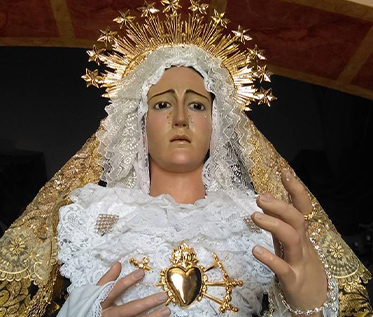
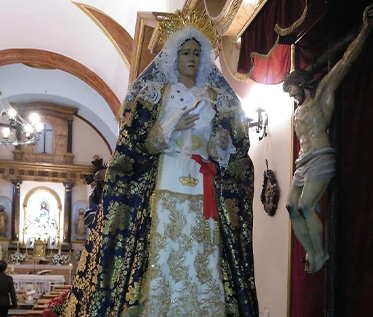
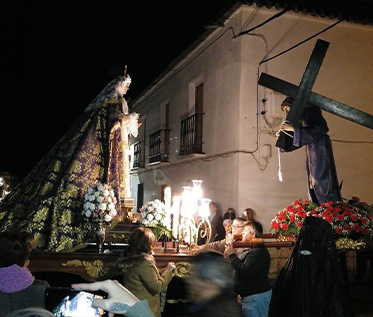
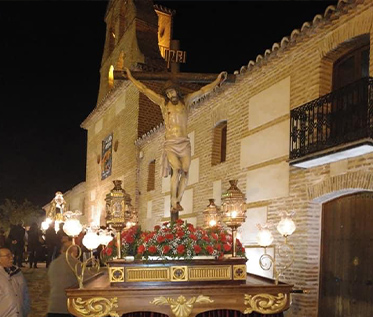
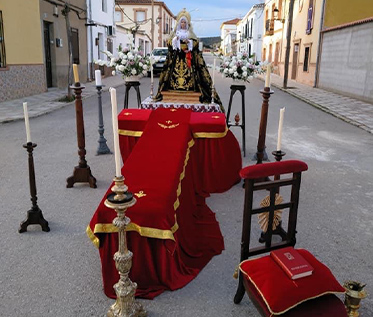
La Cuca (Easter Sunday)
On Easter Sunday this unique festival is held, which was brought by the new settlers in the 18th century.
It is celebrated with a day in the countryside with friends and family, who go to the herd, where they eat lamb, pipirrana and the typical boiled eggs that are painted and decorated. Games are set up where the eggs are cucado (crashed), the one who ends up with his egg intact wins and keeps the eggs of the defeated opponents.


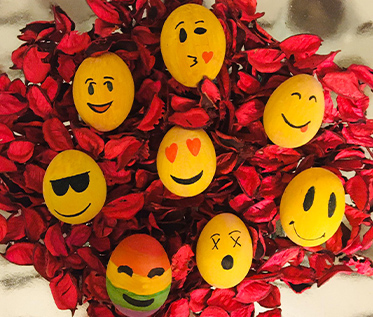
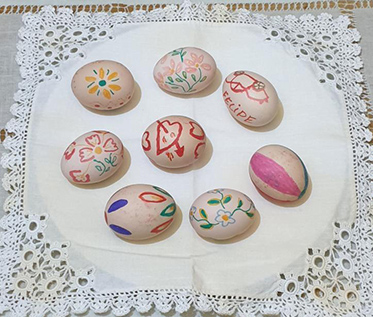
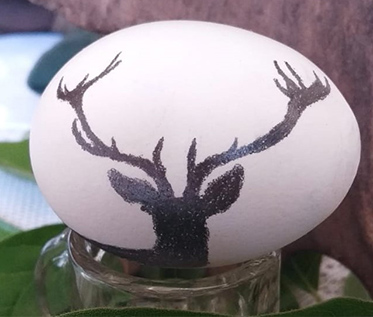

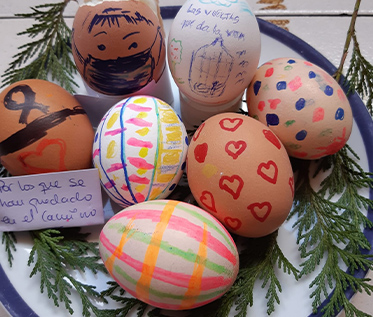
May Crosses (3 May)
In Aldeaquemada, altars dedicated to the Cross are built in their houses, a methodical task that requires great devotion and love for the traditions, which are visited with devotion, praying and chanting for its exaltation.
The Virgin is a key element in these poems and songs, to whom most of the coplas are dedicated, many of which are known as Mayos de la Virgen.

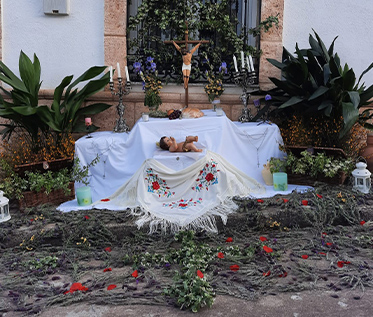
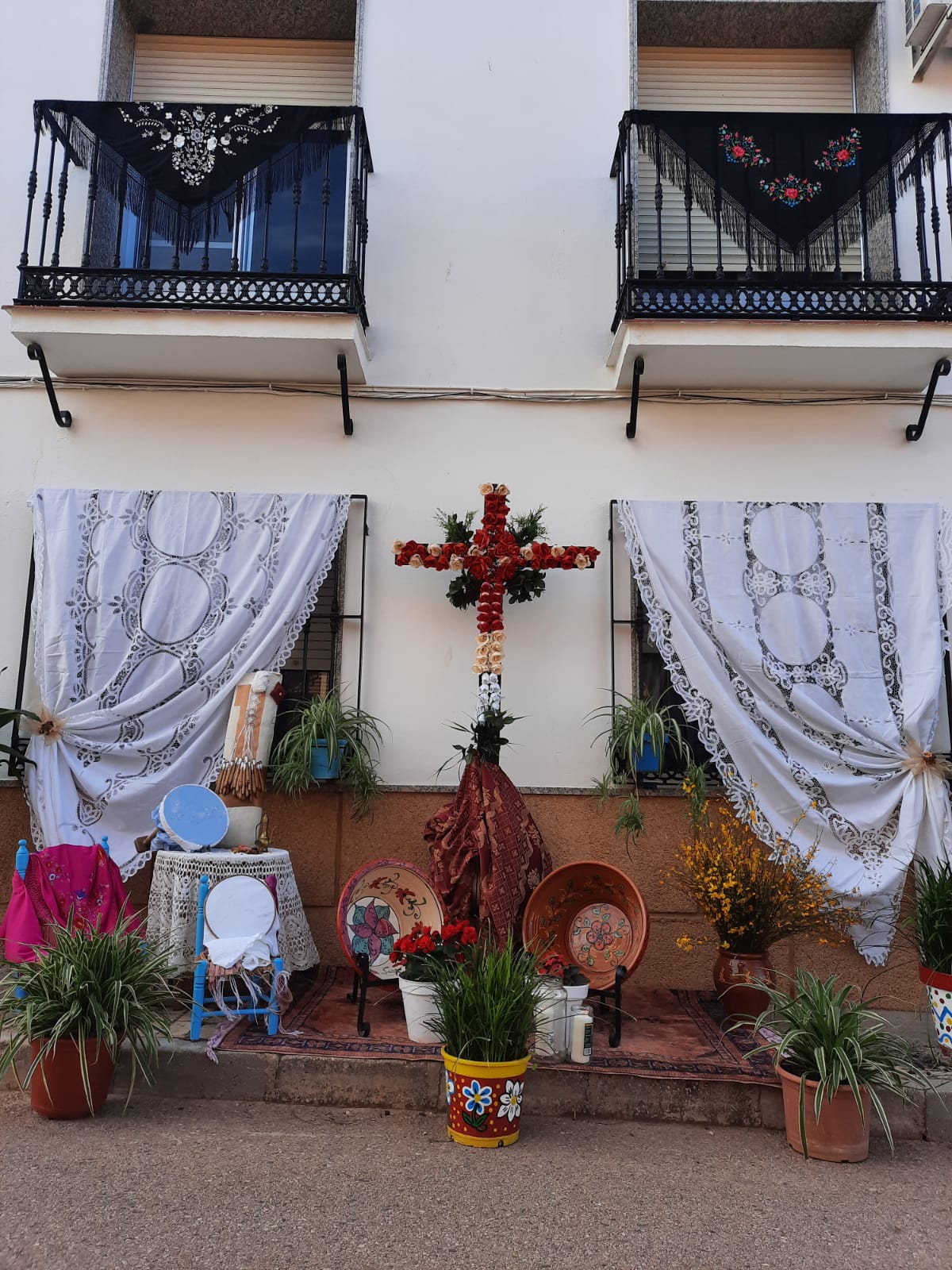


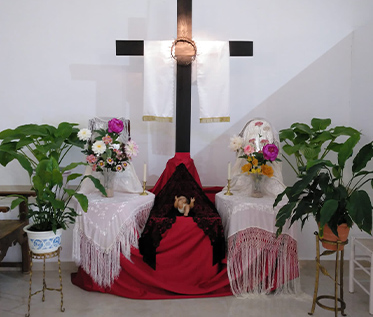
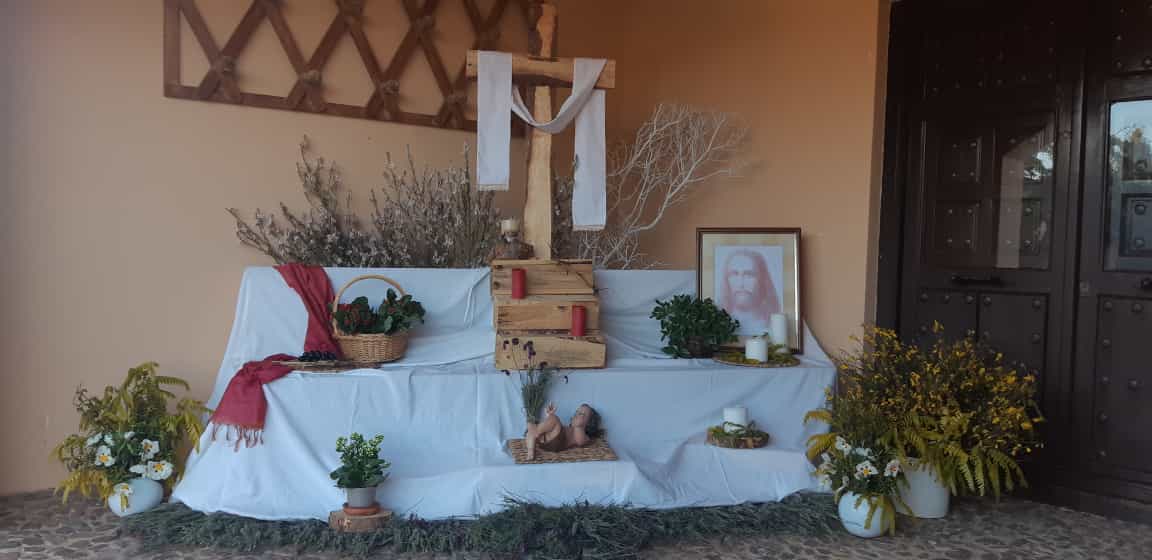
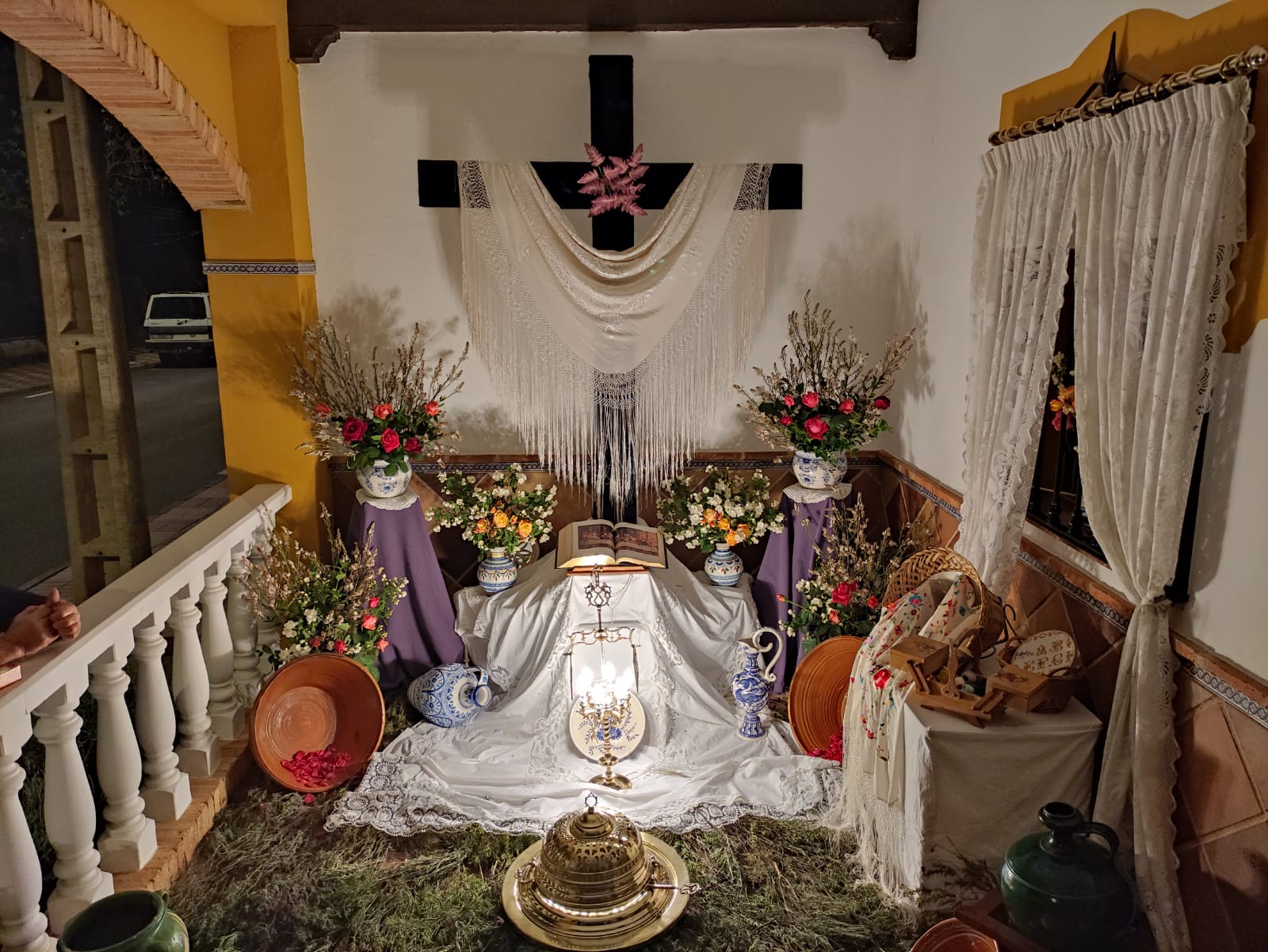
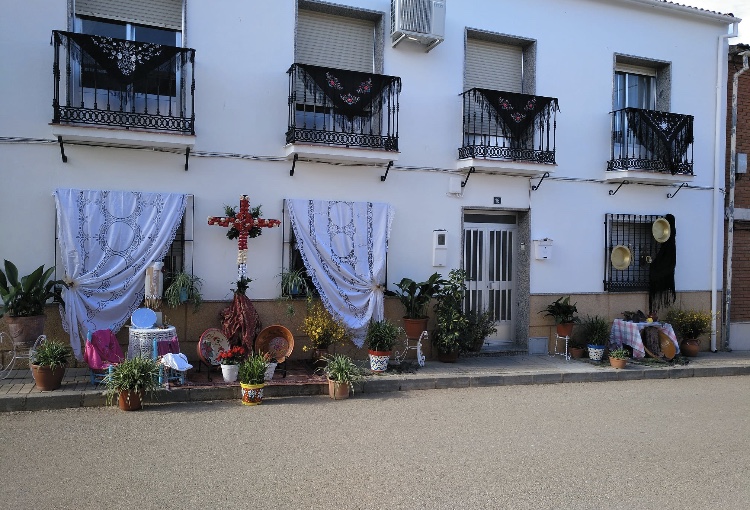
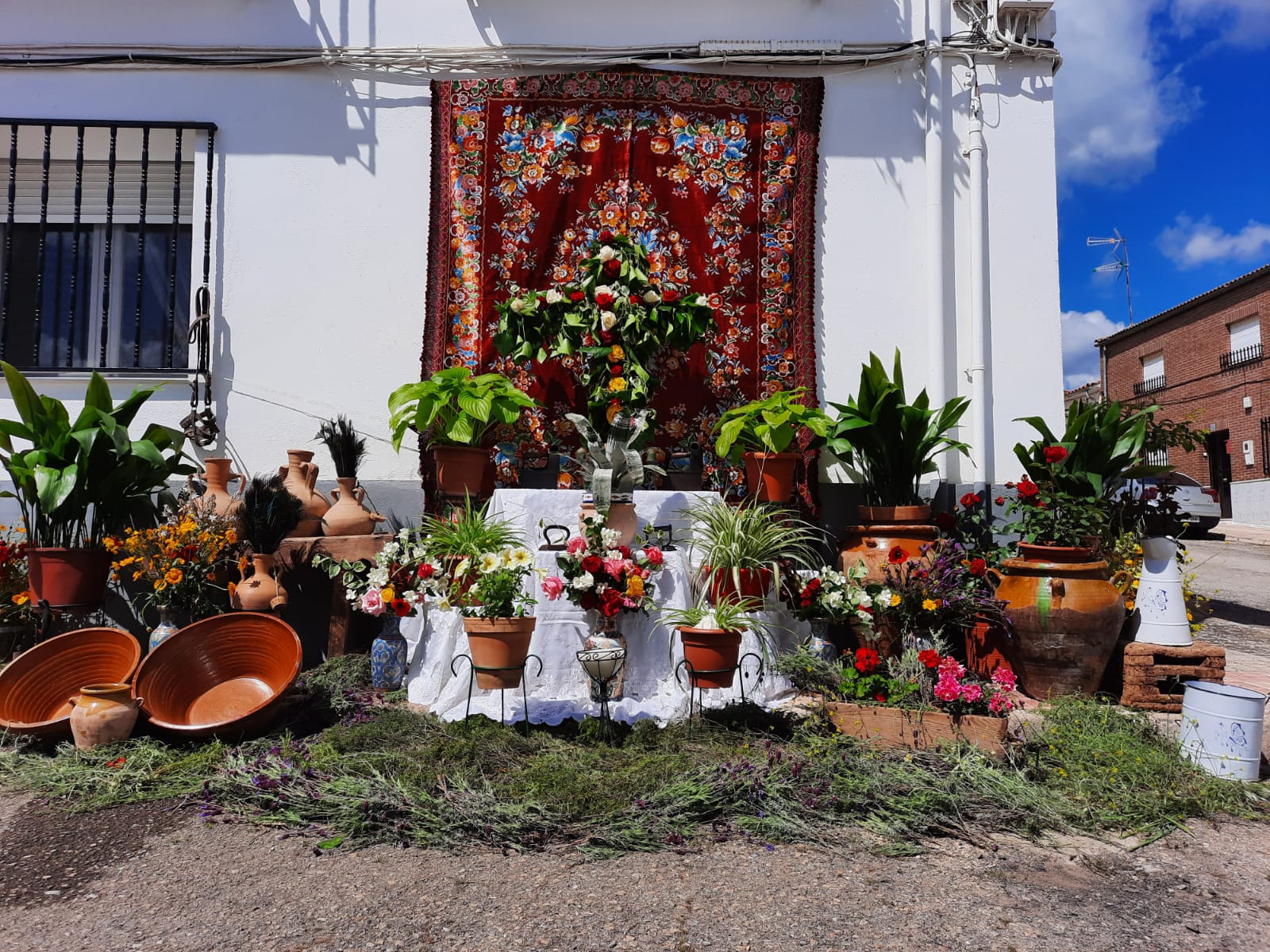
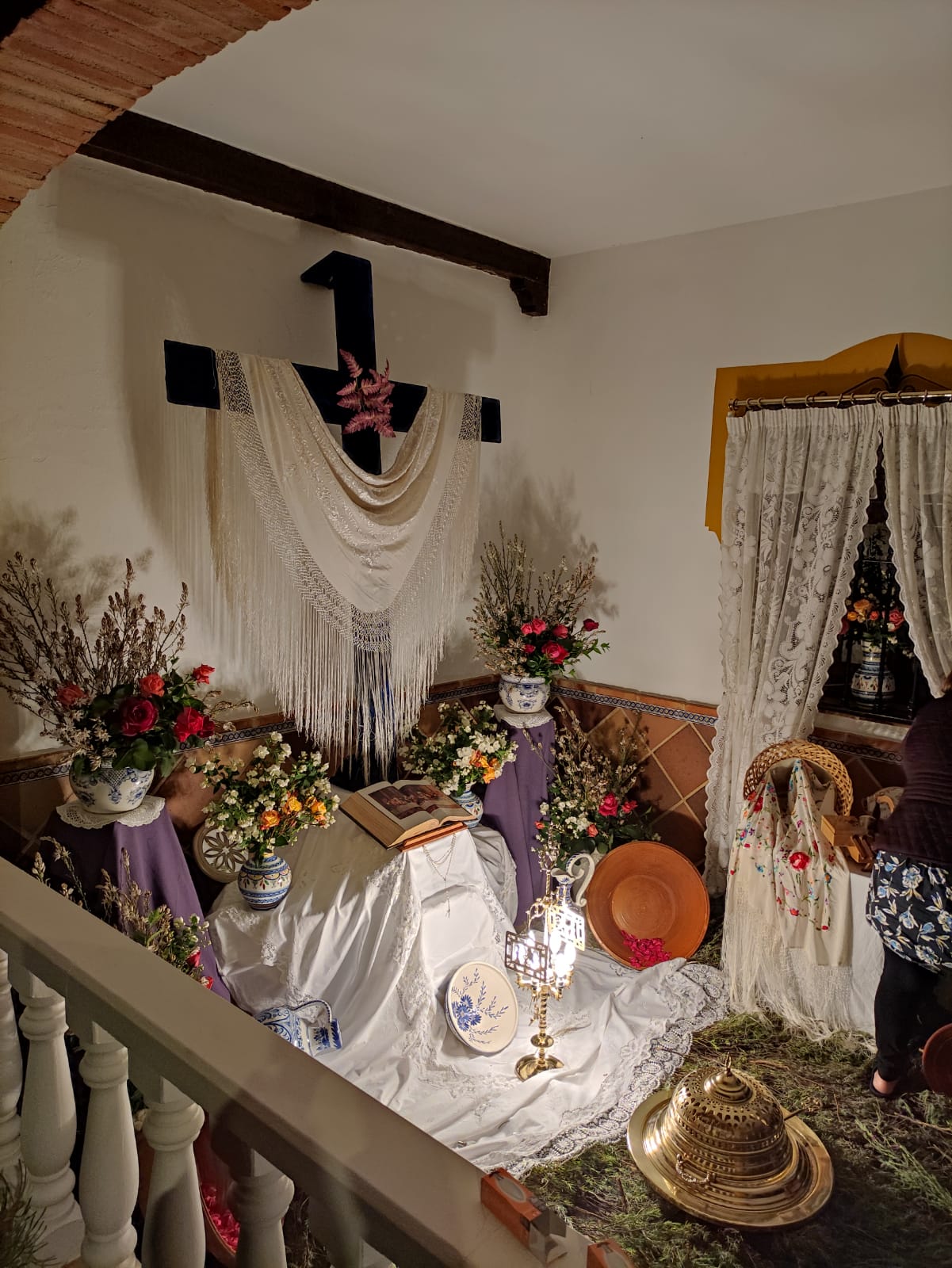



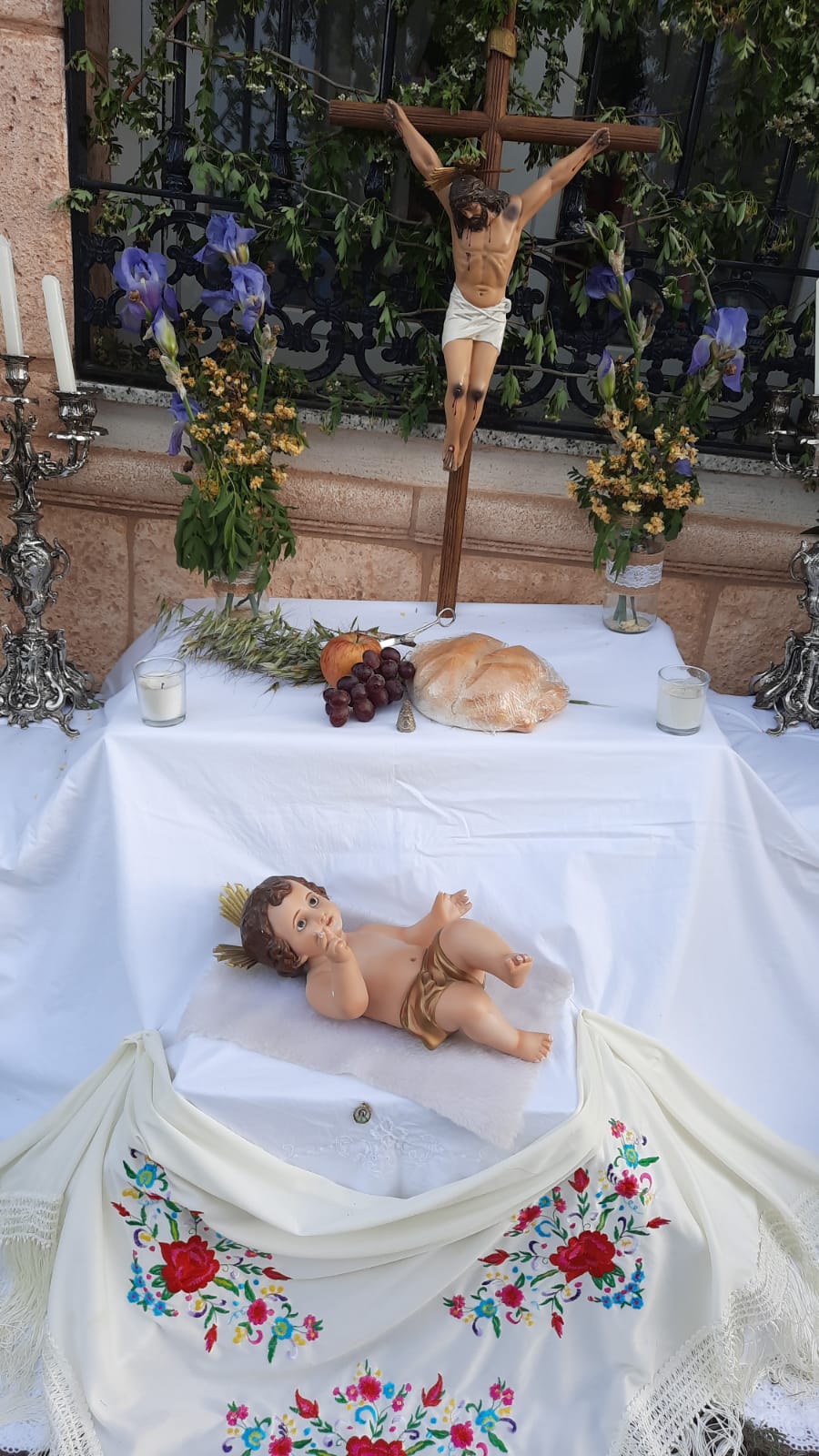
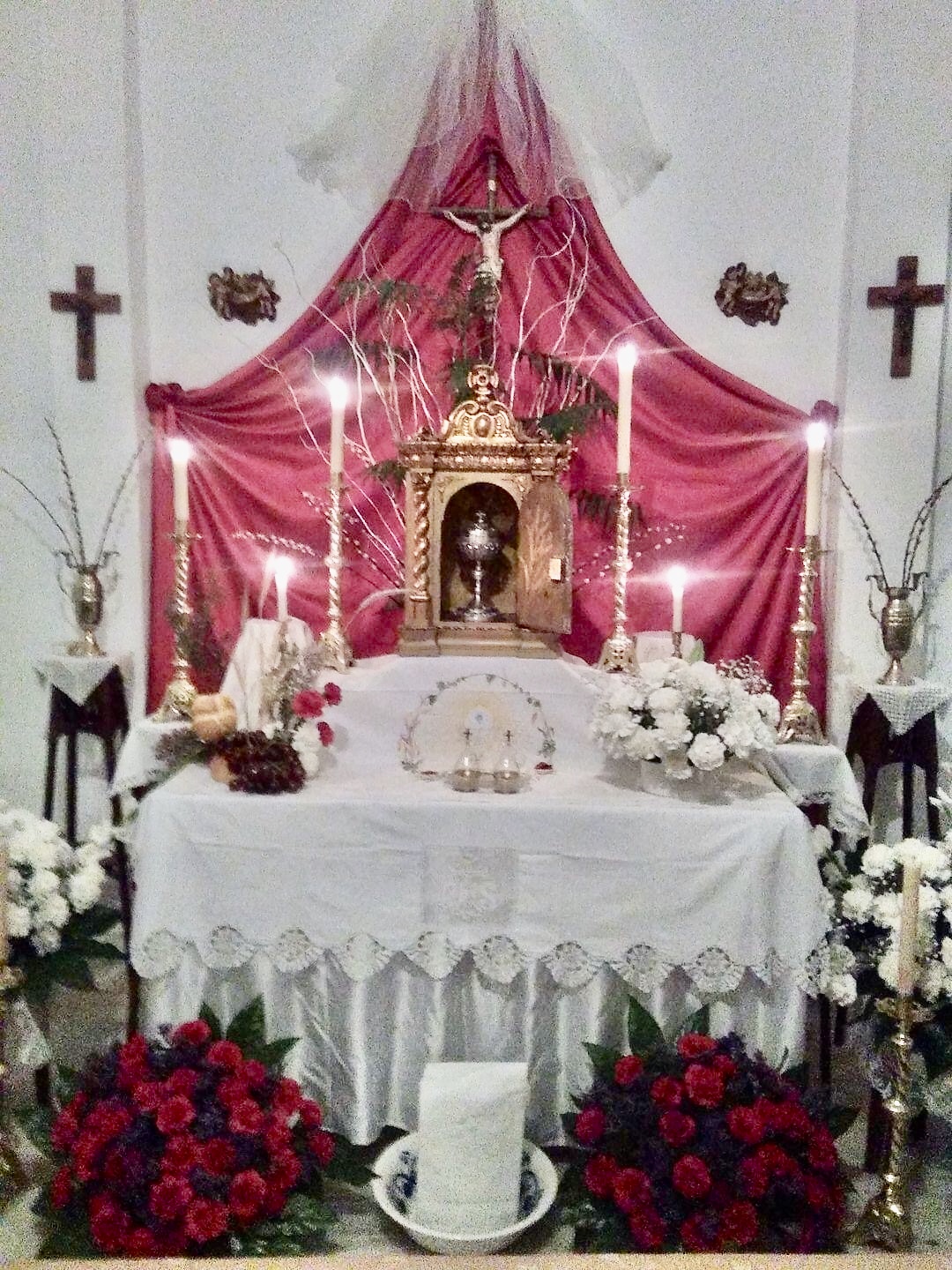
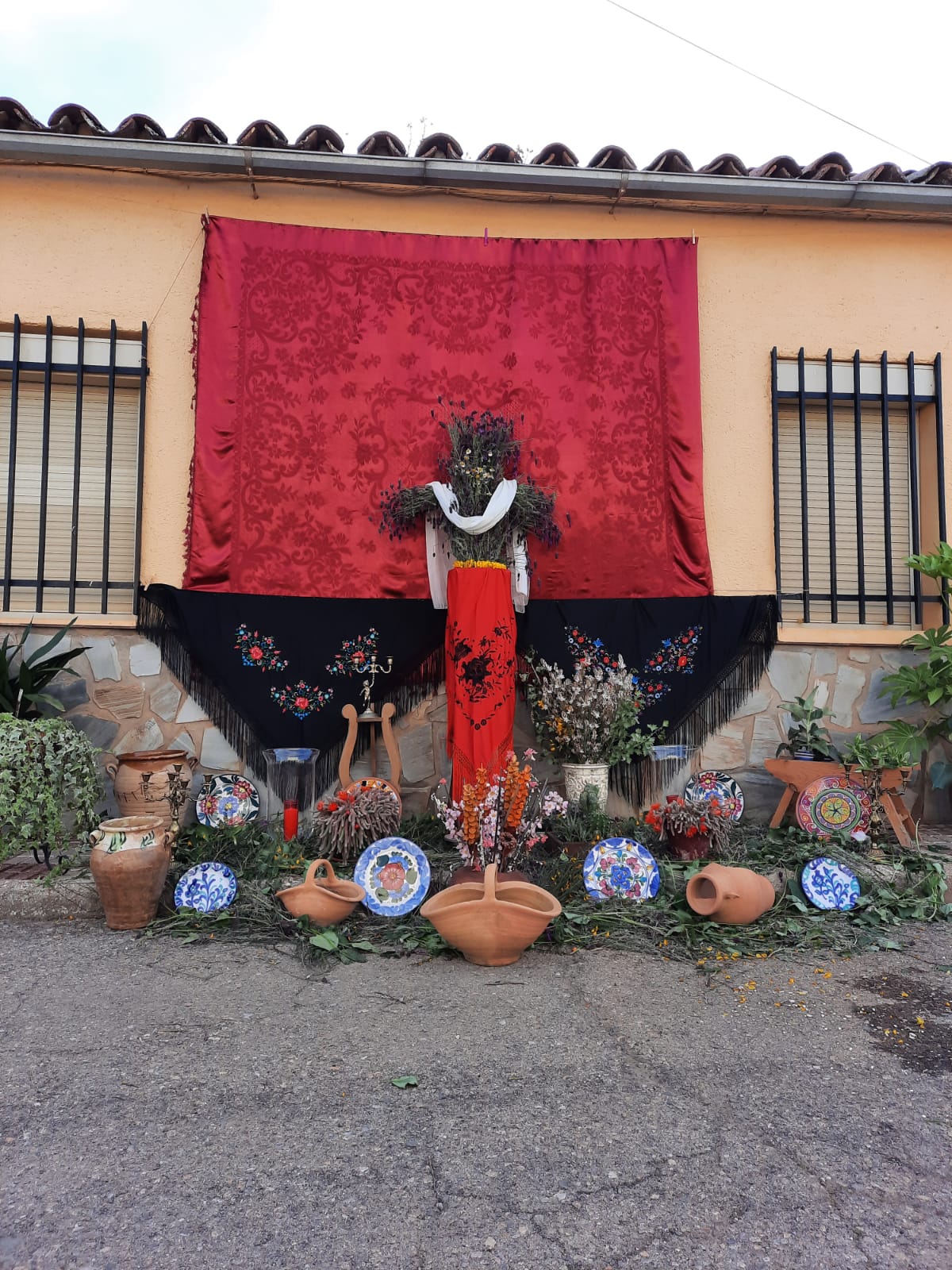
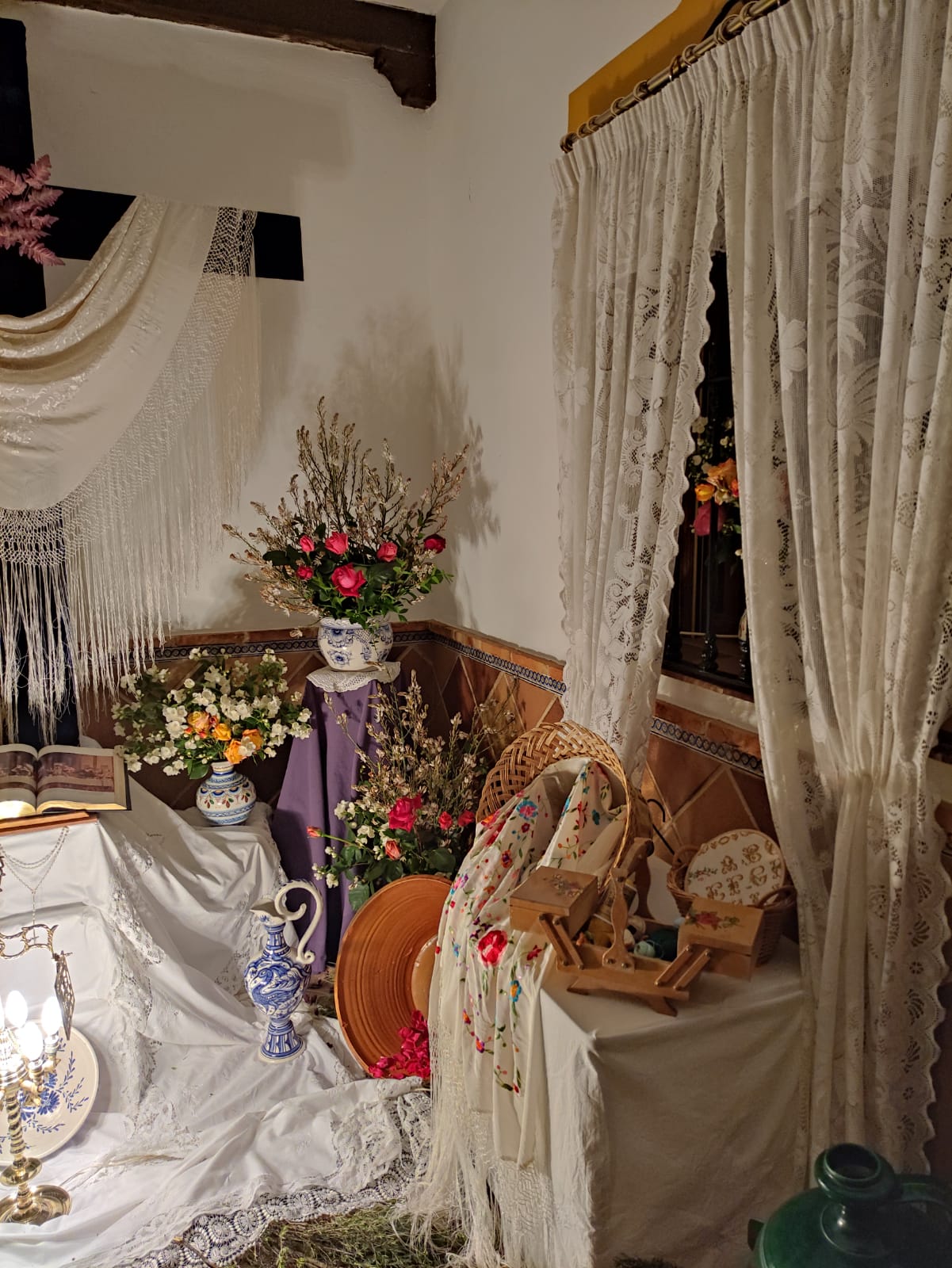
Conference on the Promotion of Tourism Resources
The festival, which had its first edition in 2000. It is based on the dissemination of the natural, cultural, gastronomic and tourist resources of this colony.
Among the activities carried out, we can highlight the typical gastronomy exhibitions, exhibitions, conferences, contact with nature, visits to the rock art sites, their history, etc.
The Conference is essential for a better knowledge of Aldeaquemada, and for the dissemination of its natural, cultural and gastronomic heritage.

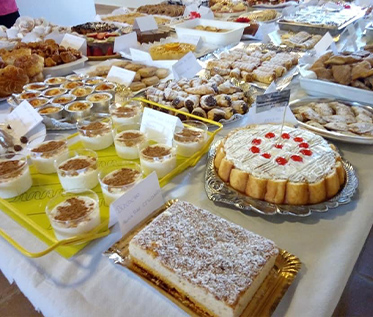
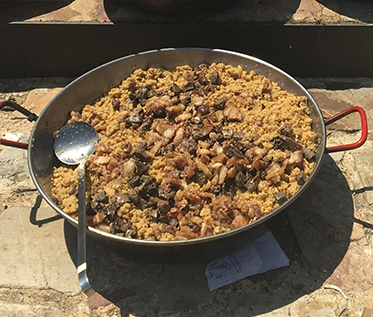
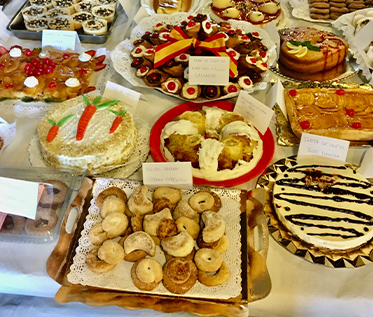

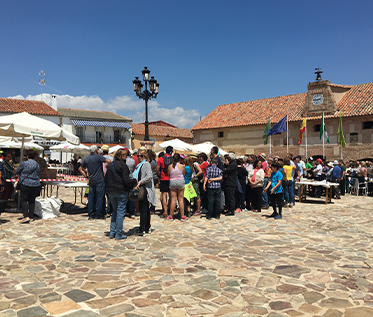
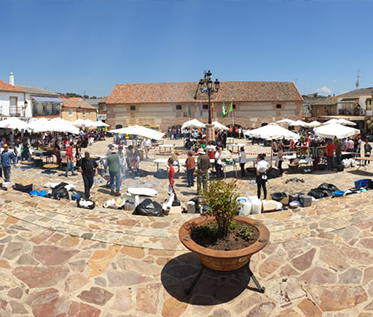
Corpus Christi (Lord's Day)
Popularly known as the Day of the Lord, the body of Christ is carried in procession in its monstrance accompanied by the children who have made their First Communion that year.
The square, avenues and streets through which the procession takes place are decorated with flowers and native plants.
The villagers build arches and altars to receive the blessing of the Blessed Sacrament and throw rose petals as the procession passes through.
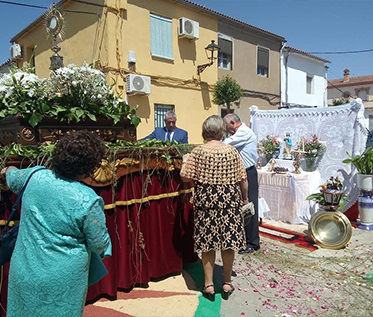
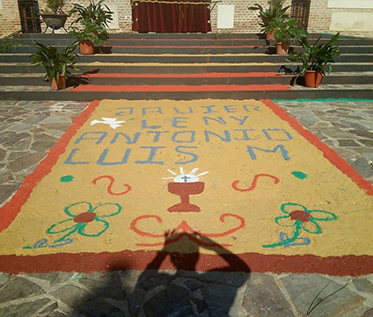
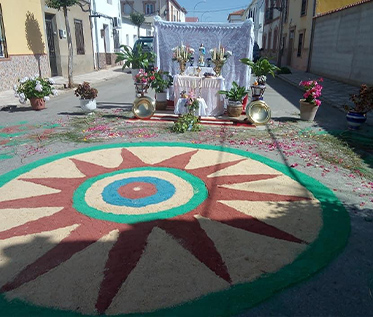
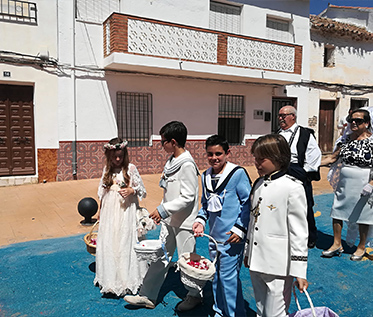




settlers party
In July 2017, the festival was held in which some of the costumes used by our settler ancestors at the end of the 18th century were revived.
The festival has become a fixture in the calendar with parades of settlers, distinctions, theatre and traditional dances such as the jota.
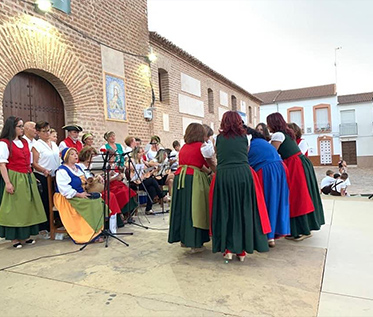
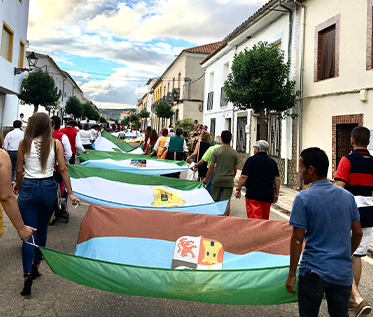


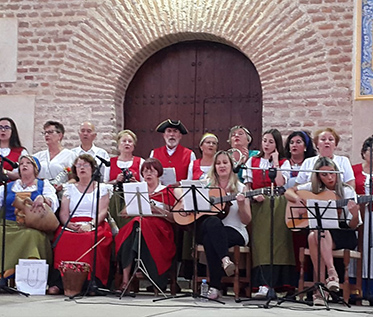
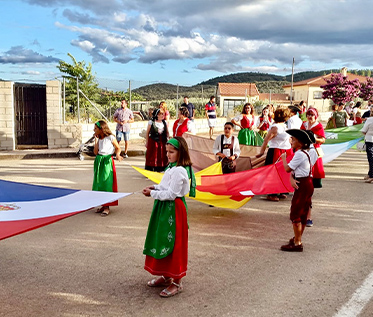
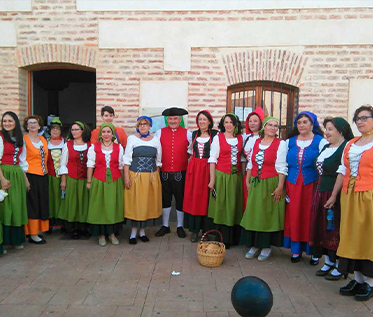
Festivities of August, San Miguelillo
Also known as “fiestas del veraneante” or “fiestas del emigrante”. They are held as a tribute to the people who had to leave for other lands in the second half of the 20th century so that they can enjoy the village festivities during the holiday period.
The festival began to be held in 1983, with bull runs, open-air dances and sporting competitions.

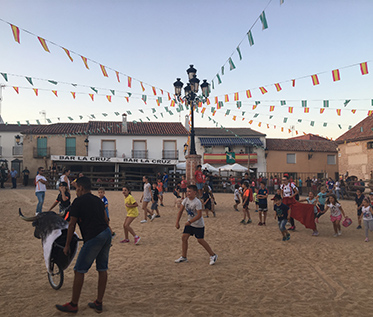
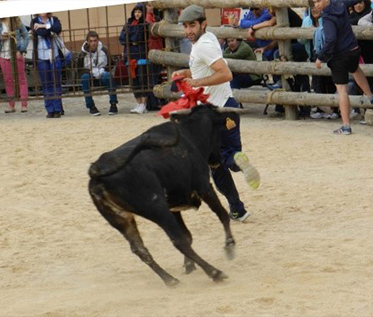
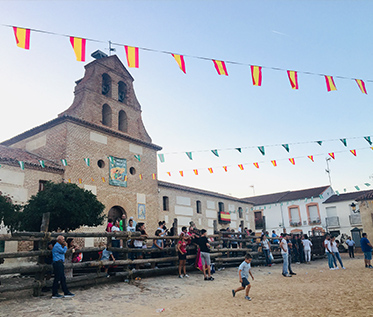
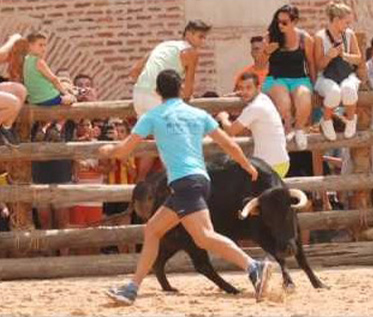
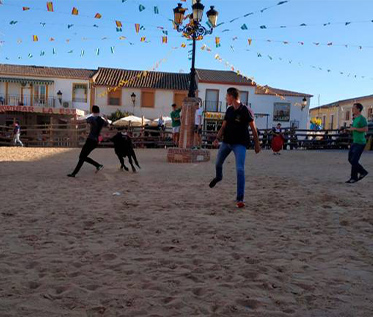
St Michael's Day (29 September)
Patron saint of this town, the devotion to San Miguel seems to be related to the leasing of the meat supply and the Dehesas during the colonial period, which in time may have given rise to a cattle shoeing festival..
After the tribute dedicated to San Miguel, the procession of the saint takes place through the streets of Aldeaquemada. Activities include street parties, concerts and the running of the bulls both in the streets and in the square.
The festival ends with a Brotherhood meal, where beef or veal is eaten.
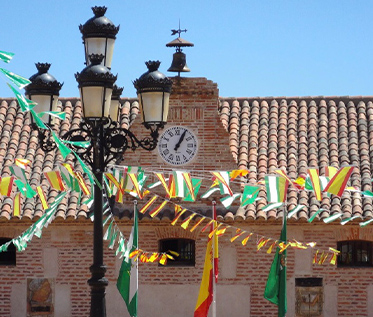

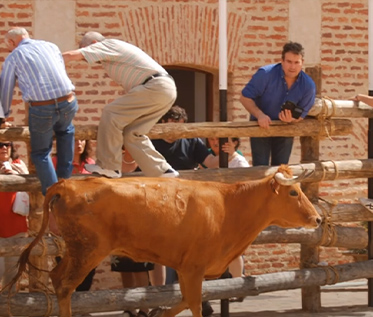
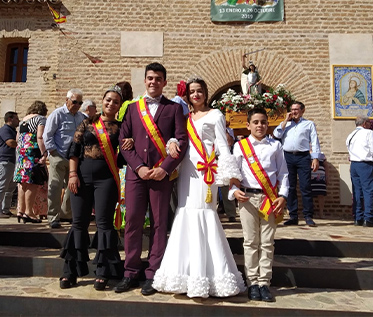

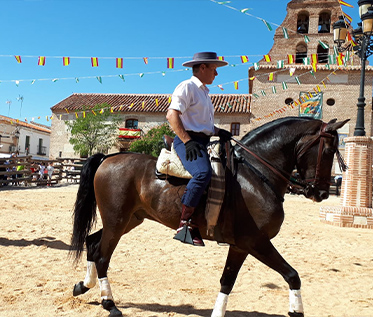

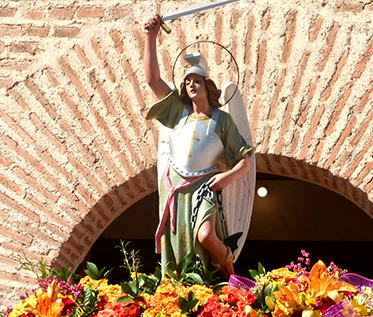
Día de Todos los Santos
This festivity is celebrated on November 1, venerating all the Saints who do not have their own festival.
Families and friends usually dine together, and spend the night of 31 October to 1 November consuming typical foods, such as porridge, roasted chestnuts and a typical drink called paloma, a mixture of brandy and sugar. Children cover the locks with porridge on the night of 31 October. It is a day of recollection, where families share moments and memories of those who have left.
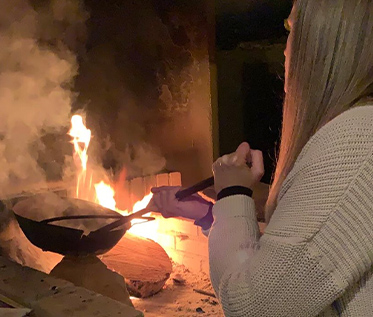
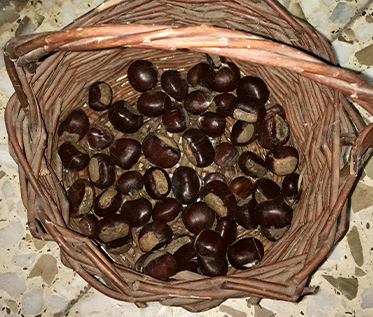
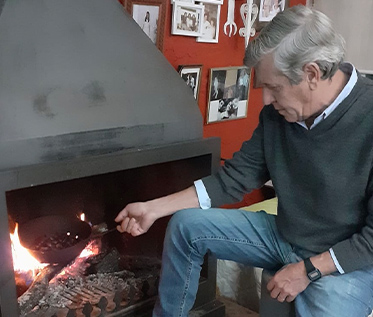
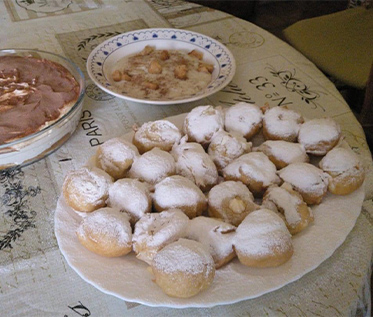
The Immaculate Conception
Patron Saint of Aldeaquemada, and of the rest of the New Towns, it has its origins in the foundation of the colonies under the protection of Charles III.
The titular image of the Parish of the Immaculate Conception is carried in procession accompanied by the older brothers and sisters and the inhabitants of the town after its traditional novena.
At the end there is a convivial meal organised by the older brothers
